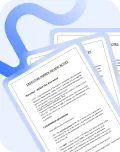#9163 - Rule Of Law And Substantive Review - Administrative Law
Rule of Law
Three Features
-a) legal principle in judicial analysis
-e.g. an unwritten constitutional principle (Que Secession; Roncarelli)
-b) institutional practice that impose legal restraints on public power:
-about cts upholding the rule while being sensitive to not unduly interfering w powers delegated to admin bodies by parliament (Dunsmuir)
-all exercises of public authority must have a source in CL> thus JR seeks to ensure this
-inherent role of SCs in reviewing (Binnie: Dunsmuir)
-conception of autonomy of law and politics
-rule of law gives legitimacy to political realm (Que Secession)
-prevents arbitrariness – can occur via jurisdiction, substance (done w bias, lack of care) or procedurally (powers outside of statute) (Roncarelli)
-e.g. Insite: found Ministers decision to deny license was arbitrary, didn’t further stat objectives
-c) political morality shared by Cdn polity (MA Language Reference)
New Minimalist Approach to the Rule of Law (Charkaoui, Imperial Tobacco and Christie)
-narrowed scope and effect of rule of law:
-doesn’t possess ability to strike down legislation based on its content
-written constitution is paramount (Imperial)
-now encompasses four principles:
-i) supreme over private and govt individuals’ exercise of power
-ii) requires creation and maintenance of a positive order of laws
-iv) requires that the relationship bw state and individual be regulated by law
-v) linked to principle of judicial independence
Substantive Review
Procedure
-once a higher court determines the correct standard of review, they will apply this standard directly to the tribunal decision, without being constrained by the decisions of the lower courts
-pragmatic and functional approach applies to all forms of review, including stat appeals (Pushpanathan)
Grounds of Review
-NB: different from standard of review
i) Procedural Impropriety
-breach of DPF
-breach of rule against bias
-lack of required independence
-improperly authorized decision maker
ii) Substantive illegality
-a) Errors of Law:
-misinterpretation of the law applicable to the resolution of the case
-b) Errors of Fact:
-“perverse or capricious” findings (FCA), findings in absence of evidence
-c) Abuse of discretion:
-excess beyond what is granted in statute
iii) Unconstitutional exercises of power
-regardless of statute, must come before court
Framework: Is JR Is Available?
Approach
-although discretionary, cts positioned as protectors of rule of law (Khosa; Dunsmuir)
i) Threshold: Is The Tribunal or Agency a Public Body?
-does it exercise a degree of public function?
-does it have a connection to public authority?
-e.g. stock exchanges- protect public but authority doesn’t stem from govt
-distinction bw govt action qua govt and private K party qua govt
-private party will likely not be able to seek JR of a board’s decision not to grant a K
-factors: tribunals functions and duties, sources of power and funding, whether govt controls the body, whether govt would have to “occupy the field” if body were not performing function, if it is part of govt machinery
ii) Party Challenging Must Have Standing
-if a party to admin action, standing granted
-more complicated in cases of a collateral interest or public interest standing
- Cdn Council of Churches: 3 part test for public interest standing:
i) show that serious issue has been raised
-encompasses both the importance of the issues and likelihood of case’s succhess
ii) must have genuine or direct interest in outcome of the litigation
-related to party’s experience and expertise re issue
iii) no reasonable and effective way to bring matter to court
-is there a more appropriate applicant?
iii) Need to Determine Which Ct to Apply
-both sup cts and fed court have jurisdiction
-NB: enabling stat only states which ct has jurisdiction to hear a stat appeal, not JR (bc JR is beyond enabling statute)
-typically determined by assessing if tribunals...
purchase it now!

